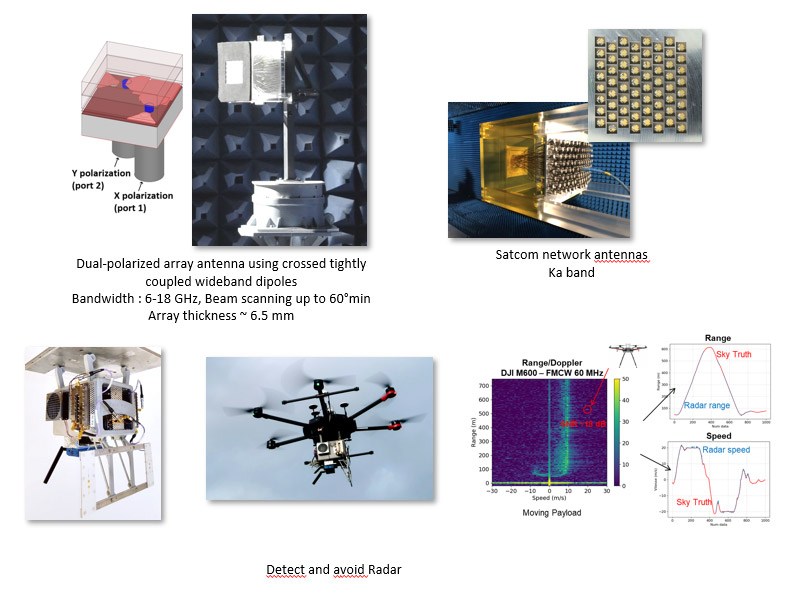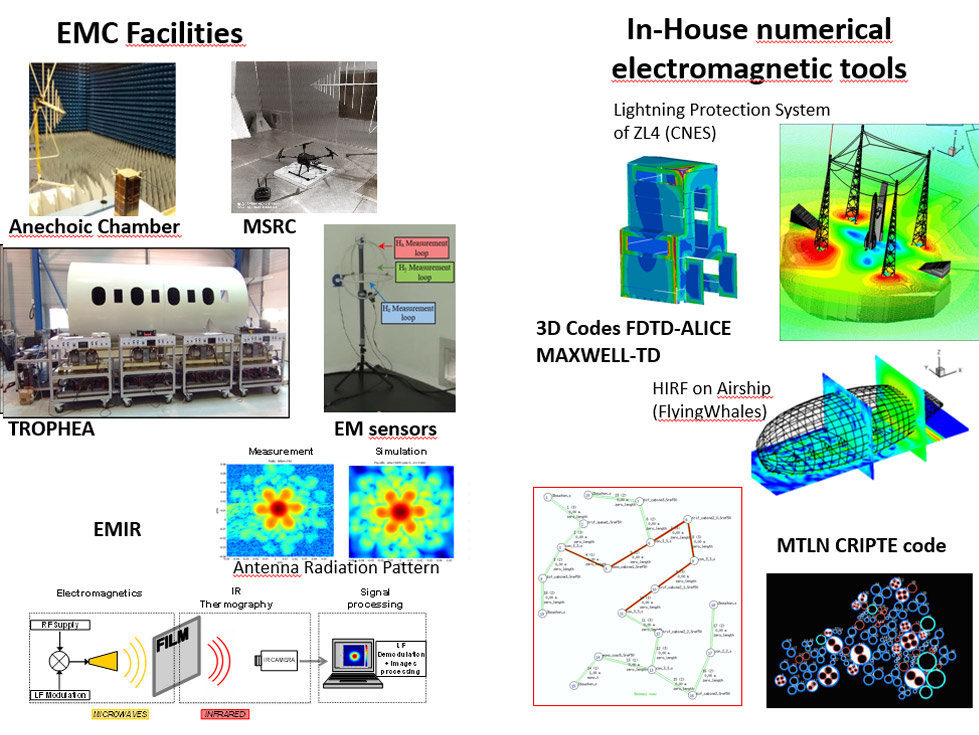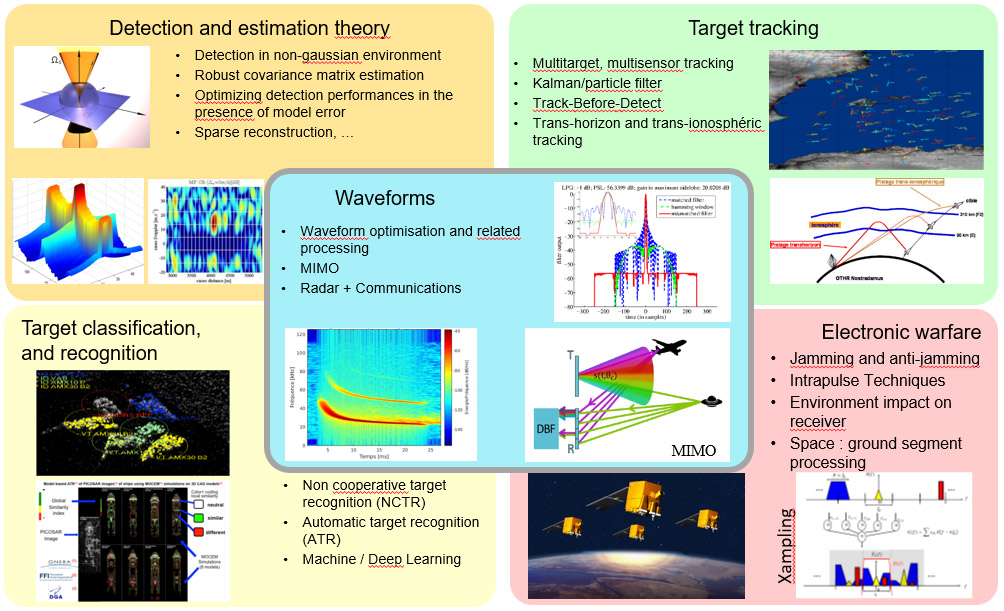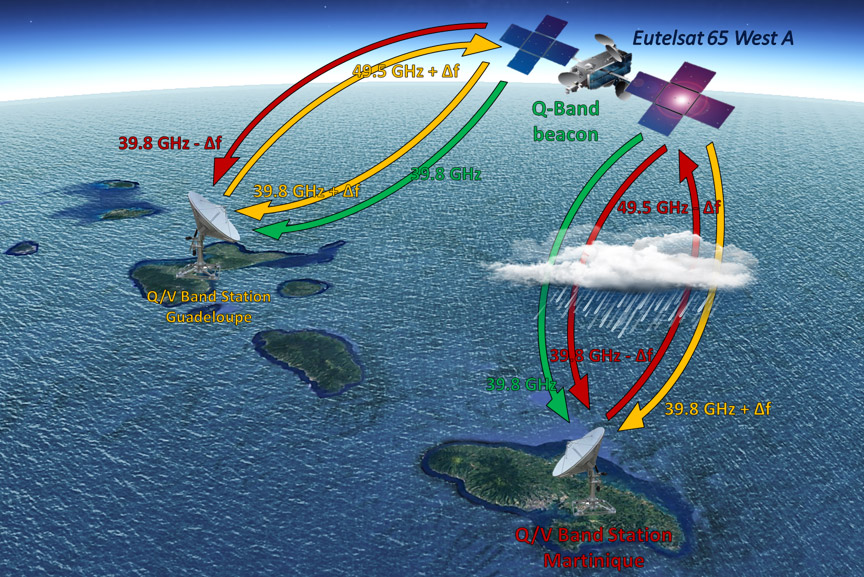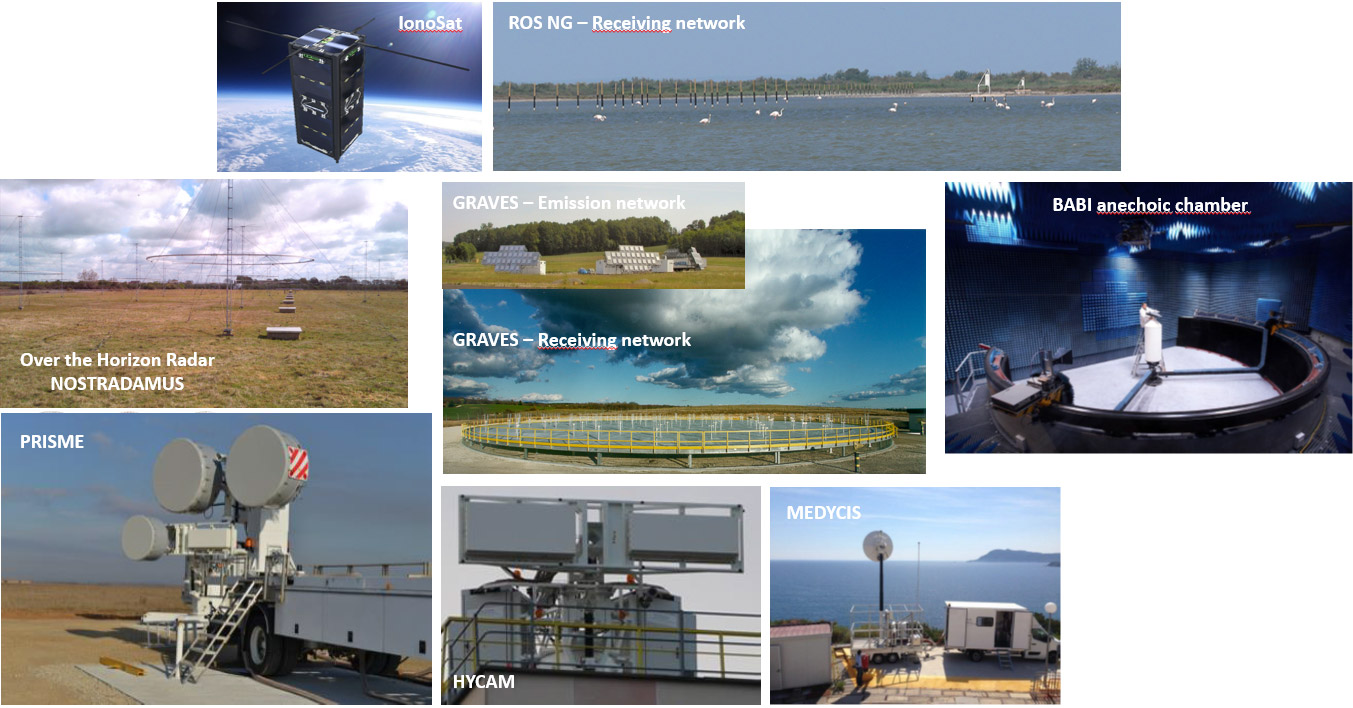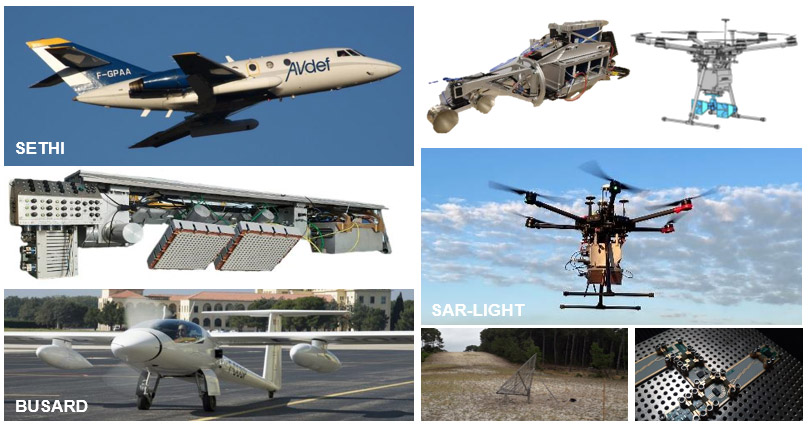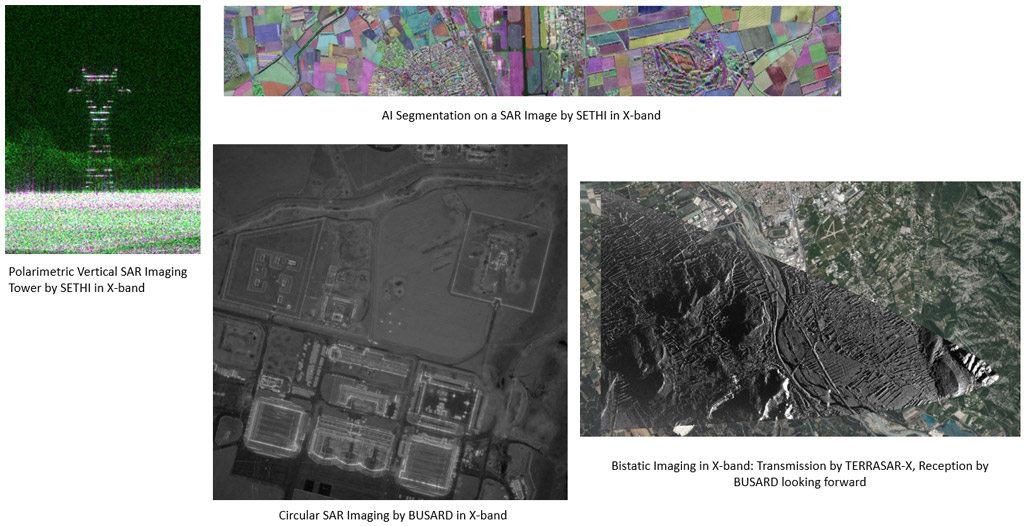- ONERA
- Scientific Departments
- DEMR - Electromagnetism and Radar
- Research units
DEMR - Research units
CAT | CME | MATS | PER | RMES | SEM | SERA | TERA
Sensors, antennas and microwave technologies (CAT)
The mission of the CAT unit is the development of compact radar and electromagnetic sensors for embedded applications (on UAV, nanosatellites …) and for fixed and tactical ground surveillance systems (on-the-ground deployable sensors, etc.). It also includes the associated signal processing (radar detection, MIMO technique, etc.). Its fields of activity as well cover the development of antennas for these sensors and for other applications (Satcom, etc.). These activities are based in particular on the use of proprietary and commercial modeling tools, antenna measurement chambers and a set of electromagnetic material characterization benches.
Electromagnetic Compatibility and Modelling research group (CME)
The CME research group brings together ONERA's expertise in the effects of natural (indirect effects of lightning) or artificial (inter- and intra-system EMC, high intensity radio-radar fields) electromagnetic interference on electronic equipment, electric cable architectures and systems, and the associated means of protection. Its two main activities are:
- The development of electromagnetic models in numerical computation codes,
- The study and implementation of innovative experimental methods.
It provides expertise for civil and military aeronautics, space and defense systems, and also leverages its skills for the benefit of industry outside these domains.
Advanced Methods for Signal processing (MATS)
The MATS research unit studies and develops the latest and most innovative processing methods for radar sensors and Electronic Warfare.
The conducted work covers all the activities related to the development of innovative systems:
- Scientific watch on emerging techniques (AI, cognitive techniques, etc.) and their application in radar and Electronic Warfare,
- Optimization of radar resource management, signal processing chains (detection, estimation, etc.), and information processing (tracking, recognition, etc.), and performance assessment against future threats,
- Validation of the processing techniques on DEMR’s or industrial experimental facilities.
Furthermore, the unit is in charge of developing and promoting passive radar systems.
Propagation, Environment and Radio communications (PER)
The PER research unit studies the effects of the environment (urban, ionosphere, troposphere…) on radio communication systems (radar, electronic warfare, radio navigation, telecommunications). Its activities involve characterizing the electromagnetic environment, modelling physical phenomena, developing innovative processing techniques. It also develops and validates numerical simulators for assessing the performance of these systems in their physical or radio environment.
Radars, Signature Measurements and Systems Studies (RMES)
The RMES research unit designs, produces and tests surface-based radar concepts using phased array for coastal, air, early warning, space and Over The Horizon (OTH) surveillance. These concepts cover a frequency range ranging from HF band to S band. The team conducts related research studies including physics of surface waves and sky waves, antennas, phase array architectures, waveforms and signal processing. It designs, builds, deploys, and operates electromagnetic signature measurement systems (from L band to Ka band) and the associated calibration procedures and infrastructures. These assets can be either performed in anechoic chamber or deployed in test ranges. The research unit also carries out studies to define new radar concepts (multifunction, cognitive, MIMO, polarimetric, ultra-wideband, multi static etc.), satellite payloads and system studies. It has expertise in microwaves, digital systems, signal processing and metrology. These skills allow harnessing the advances in digital technology in order to offer innovative microwave/digital architectures that will lead to future system disruptions (hardware, real-time management of modes, “intelligent” waveforms…).
Simulation, Environment and Modelling (SEM)
The SEM research unit is responsible for designing and developing numerical simulation tools for radar or electronic warfare applications. These simulations cover all elements affecting sensor performance and allow ONERA and defense industry partners to evaluate new concepts during the early stages or, as part of programs, to provide insights during the equipment evaluation and qualification process.
The unit also addresses applications of generative models for the synthesis of radar data and images, in connection with natural language processing and computer vision.
It coordinates activities around the EMPRISE reference framework (https://www.emprise-em.fr/) for the benefit of the DGA and French and European industries.
Finally, it also conducts electromagnetic modeling activities applied to target signature calculations and stealth.
Aerospace Radar Systems and Experimentation (SERA)
The SERA research unit is dedicated to the expertise, study, design, and realization of airborne radar systems and conducts experiments in aerospace environments.
To achieve this, it implements demonstrators aboard various airborne test platforms, covering a range of flight domains that allow for short-range proximity measurements (SAR-Light drone), medium and long-range (BUSARD motor glider), and long-range and wide coverage (SETHI jet aircraft). It integrates innovative sensors with unique performance and flexibility aboard these platforms, enabling the conduction and support of various study and research programs in electromagnetic remote sensing and radar imaging applied to civilian and defense domains.
Thus, the research team brings together skills in project management, analog, digital, and microwave electronics, mechanics, embedded computing, and aeronautical integration/certification.
Remote Sensing and Aerospace Radar Studies (TERA)
The TERA research unit brings together activities related to the processing and studies associated with onboard radars: SAR (Synthetic Aperture Radar) imaging, MTI (Moving Target Indication), and seekers. The research and study areas cover a wide range of expertise, from raw radar data processing to the analysis and utilization of remote sensing images, using conventional methods or machine learning through artificial intelligence. It is also involved in related techniques: polarimetry, interferometry, tomography, circular or vertical SAR imaging, multistatism, system sizing...

